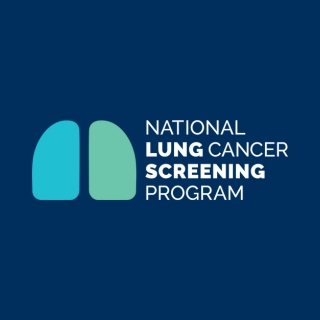Australia’s first National Lung Cancer Screening Program (NLCSP) commenced on 1 July 2025, marking a landmark public health initiative aimed at improving health outcomes through early detection.
The program is targeted at high-risk individuals aged between 50 and 70 years of age with a smoking history. Through the program, eligible participants can have a low-dose computed tomography (LDCT) scan, with the aim of detecting lung cancer earlier.
Australians will be eligible, if they are:
- aged 50–70 years;
- show no signs or symptoms suggesting they may have lung cancer (ie, they are asymptomatic);
- currently smoke, or have quit smoking in the past 10 years; and
- have a history of tobacco cigarette smoking of at least 30 pack-years.
With lung cancer remaining the leading cause of cancer-related death in Australia, the NLCSP is expected to save hundreds of lives each year.
Program need
Lung Cancer is the fifth most commonly diagnosed cancer in Australia.
In 2024, it was estimated that over 15 000 Australians were diagnosed with lung cancer and, sadly almost 9 000 Australians lost their life to the disease.
Lung cancer is often diagnosed in late stages, when symptoms become present. Large international randomised trials have shown that a LDCT scan can detect up to 70% of lung cancers at early stages and reduce lung cancer mortality by 20%.
Role of doctors
Doctors play a critical role in the delivery and success of the program. They are responsible for:
- discussing the program with potential participants;
- assessing patient eligibility;
- providing participants with a request for a low-dose CT scan;
- enrolling participants in the National Cancer Screening Register (NCSR); and
- managing results.
Read more on the National Lung Cancer Screening Program health workforce roles and responsibilities.
A toolkit to support healthcare providers
To assist doctors to deliver the program, the Department of Health, Disability and Ageing has released a Healthcare Provider Toolkit, with education information and resources.
The healthcare provider toolkit includes:
- Information to support healthcare providers to prepare for and deliver the program;
- Resources for healthcare providers and the public, including new resources for Aboriginal and Torres Strait Islander people and culturally and linguistically diverse communities;
- A link to the program-specific LDCT request form;
- Links to CPD-accredited program eLearning modules developed by Lung Foundation Australia; and
- A communications toolkit containing promotional content.
What healthcare providers can do now
Now that the program is available, healthcare providers can take the following steps to support implementation:
1. Complete the new program eLearning modules
Lung Foundation Australia has developed CPD-accredited education for healthcare providers.
2. Ensure your practice is integrated with the NCSR
The National Cancer Screening Register will be used for program referrals and reporting.
3. Familiarise yourself with the program guidelines
The guidelines outline the role of doctors and the screening and assessment pathway.
4. Identify eligible patients
Review and update your smoking history practice data to identify patients who may be eligible and establish electronic medical record (EMR) based prompts to help identify potential participants as they become eligible.
5. Ensure your practice has undertaken formal cultural safety training
This may assist in fostering and providing culturally safe care to Aboriginal and/or Torres Strait Islander peoples.
Reducing Stigma
Reducing the stigma and shame associated with cigarette smoking and cancer risk is critical to supporting participation in the NLCSP.
Participants eligible for the NLCSP will have a history of tobacco cigarette smoking. They have likely experienced stigma and discrimination because of this, and as a result may be hesitant about lung cancer screening.
It is critical to minimise stigma associated with smoking and cancer risk. This can help address barriers to a person participating in the program or seeking medical help more broadly.
Learn strategies on reducing stigma in the National Lung Cancer Screening Program.
Supporting Equity and Cultural Safety
In partnership with the National Aboriginal Community Controlled Health Organisation (NACCHO), this program is designed to be equity-focused, culturally safe, and person-centred.
To help the Program achieve equity, healthcare providers need to apply the Ahpra definition of cultural safety, which emphasises that “culturally safe practice is the ongoing critical reflection of health practitioner knowledge, skills, attitudes, practicing behaviours and power differentials in delivering safe, accessible and responsive healthcare free of racism”.
Education resources developed by Lung Foundation Australia have used a Cultural Safety Lung Learning Framework, developed in consultation with key First Nations stakeholders.
The Royal Australian and New Zealand College of Radiologists has developed cultural safety resources to support the radiology workforce to provide culturally safe care to Aboriginal and Torres Strait Islander participants and communities.
NACCHO has developed resources for Aboriginal and Torres Strait Islander people and communities, and their health professionals. These resources are now available on the NACCHO website. You can register to be notified when new resources are available via the NACCHO website.
Accessing resources and support
The full suite of education and resources for healthcare providers are available online at: health.gov.au/nlcsp-hcp-toolkit
Hard copy resources can be ordered via: cancerscreeningcommunications@health.gov.au

 more_vert
more_vert